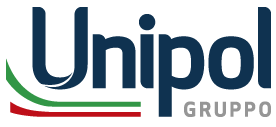Building & Protection
Reputation
“The reputation of an organization is the blend of all the expectations, perceptions and opinions developed over time by customers, employees, suppliers, investors and the wider public in relation to the organization’s quality, features and behaviors that result from their personal experience, hearsay or observation of the organization’s past actions”. (Bennett and Kottasz - 2000)
Read more
There is not only one side to reputation: it varies depending on the stakeholders it refers to
- Reputation only forms with the passage of time
- Reputation is based on behaviors and actions carried out by the organization, thus on its real history, compared with the promises / expectations
- Reputation is conditioned by the mediated experiences the stakeholder has with the organization
Over the years many definitions of the concept of corporate reputation have been given but the main issue is to understand what determines a good reputation. The theory is simple: an organization has a good reputation when it meets or even exceeds the expectations of its stakeholders. The concept is well expressed by the equation proposed by Oonagh Mary Harpur (Corporate Social Responsibility Monitor, 2002 London: Gee Publishing):
Reputation = Experience - Expectations
Stakeholder expectations are formed on the convictions that they have in regard of a company and what it does, and these are influenced by what the company says about itself (vision, goals, values) and what third parties (mass media, social media, opinion makers etc.) say about it. When there is consistency between the Company’s expectations and actual conduct, a good reputation is built.
“You can’t build a reputation on what you’re going to do” (Henry Ford)
Project philosophy
Corporate reputation has now assumed a prominent role in the strategy of each type of company not only in reference to financial or institutional stakeholders, but also consumers, who with ever greater attention seek confirmation of the goodness of their choices by taking into consideration the behavior of companies that produce the goods and services they have purchased.
Read more
As a result it becomes increasingly important for every company to analyze both the factors that contribute to determining reputation and the sources of information that stakeholders use to make their assessments. Research conducted at the international level points out that among the many sources of information, mass media and social media play a significant and growing role: it is therefore necessary to develop structured monitoring and analytical skills of the dynamics underlying the formation of traditional media reputation and social media reputation, in order to manage them coherently and knowledgeably.” (“Corporate reputation: valore per l’impresa, garanzie per il consumatore.” (Corporate reputation: value for the company, guarantee for the consumer) – Consumatori, Diritti e Mercato. Argomenti, issue 3/2012” – Roberto Paolo Nelli, Professor of Economics and Technology of Corporate Communications at the Università Cattolica del Sacro Cuore)
Moreover, as noted by Alan Greenspan, former Chairman of the United States Federal Reserve, “In today’s world, where ideas are increasingly replacing tangible production in the creation of economic value, competition for reputation becomes a major driving force that pushes our economy forward. Producers of consumer goods can often be evaluated before purchase. Service providers, on the other hand, usually can only offer their reputation”.
Reputation creates support - a growing reputation generates greater willingness to put in place favorable behavior by the stakeholders, purchase intent being one example. Moreover, organizations with reputation above average obtain better business performance, on average generating better ‘financial’ and ‘market’ results.
Corporate reputation thus impacts business because it allows companies to:
- place products at higher prices and enhance premium content
- attract capitals against lower costs
- work with several more motivated suppliers ready to offer their products at lower prices
- attract and retain talent
- be the preferred partners in business and financial operations
Reputation is therefore a true corporate asset that must be monitored, enhanced and protected.
These are the premises on which the Integrated Reputation Management Project of the Unipol Group has been developed.
Building and protecting reputational capital
Since 2014 Unipol Group has been building a framework for the management of corporate reputation with the aim of permanently integrating the asset in business planning processes.
The Unipol framework in fact operates in two modes, that of construction and that of defense of reputational capital, through two working venues that make use of corporate expertise and dedicated facilities in a path of constant mutual alignment under the joint leadership of the departments of “Corporate Communication and Media Relations” and “Risk Management”.


